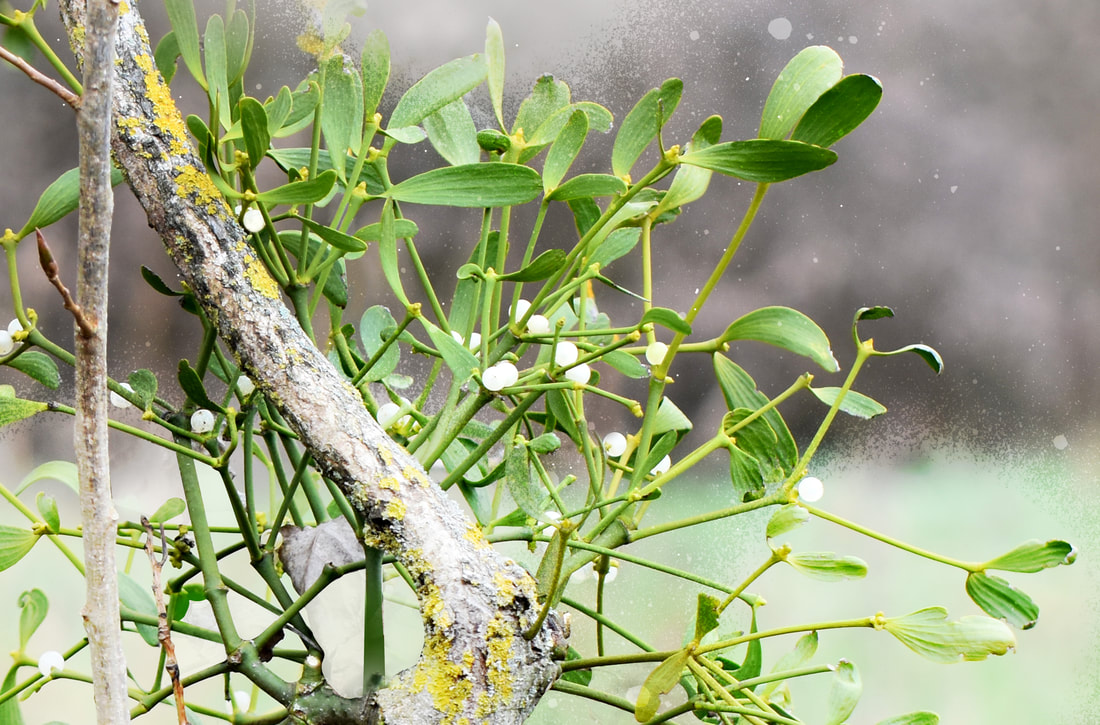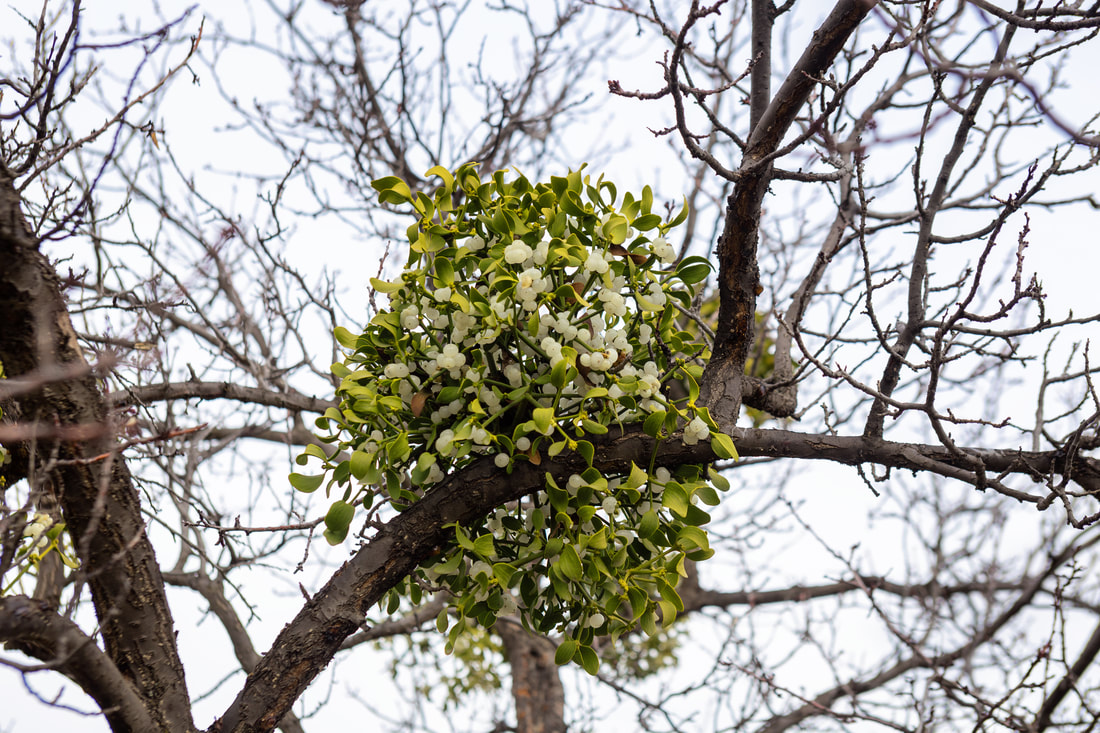|
Holidays in general and Christmas in particular are times when we celebrate traditions. Christmas has many traditions that are tied directly or indirectly to plants. We put up a tree in our house to decorate and put presents under it. We hang a wreath made of greenery from trees and bushes on our doors and windows, and we put plants such as poinsettias inside the house. Another interesting tradition is hanging mistletoe in the house, in the hopes that someone standing underneath will be blessed with a kiss. American mistletoe (Phoradendron leucarpum) As a horticulturist, this particular tradition is funny to me, as there is nothing inherently romantic about the mistletoe plant. It’s not particularly attractive and it is one that typically survives as a parasite of another plant. It is technically a partial parasite, meaning it can grow on its own and produce its own food via photosynthesis, but is more often found growing on other plants and depleting their resources. Many origin stories describe mistletoe as being a historic symbol of fertility and as such, some cultures would hang it in their homes as a sort of good luck charm. Other cultures thought mistletoe had the ability to ward off evil spirits and hung it for those reasons. The tradition of kissing under the mistletoe seems to derive from the Greek festival of Saturnalia, and later became incorporated into Christmas customs. American mistletoe, Phoradendron leucarpum, is an evergreen plant with small white flowers and berries. It is most commonly found growing on trees such as maple, oak, walnut, and poplar in our area. The roots of the mistletoe penetrate the bark of the host tree through pores or wounds, and steal water and nutrients from the host. Mistletoe will only rarely kill a tree, but can potentially weaken it, leaving it susceptible to other problems. Because mistletoe is a parasite and essentially shares a vascular system with its host plant, there is no chemical that you can use to kill it that won’t also hurt the host. Instead you must prune out the mistletoe. If it is growing on a small branch, prune off that branch at least one foot below where the mistletoe is attached. If it’s a larger branch that you can’t remove, prune back the mistletoe as close to the branch as possible, and then wrap that area with a dark fabric to prevent the mistletoe from resprouting. You may have to prune again several times before you’ve completely removed the mistletoe. Mistletoe grows in trees and can be high up in the branches where is it difficult to control. These controls might be realistic for smaller trees, but practically speaking it will be difficult to control larger trees that have been infected with mistletoe. Since it is rare for a mistletoe infestation to be severe enough to kill a tree, you may just have to tolerate seeing the mistletoe for the few months a year the tree is without its leaves, and then let the leaves hide the mistletoe for the rest of the year.
Matt Stevens is the County Extension Director and horticulture agent for North Carolina Cooperative Extension’s Pitt County Center. If you have any questions about this article or gardening in general, please contact the Master Gardener Infoline at 252-902-1705. Photos from iStock
0 Comments
Leave a Reply. |
Matt Stevens
Pitt County Extension Director & Horticulture Agent Archives
July 2024
Categories |


 RSS Feed
RSS Feed